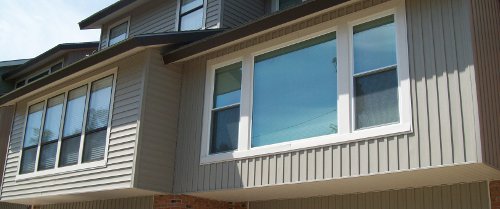
Energy Efficient Windows: What to Look For
Average Rating
Rate This Article
Most Popular Windows Cities
Related Articles
Home Heating Systems: 5 Popular Options Make Your Fireplace More Efficient: 5 Optimization Tips Window Repair vs Window Replacement At Home Composting Guide Building a Sphere House Choosing an Air Conditioning System Creating a Green Kitchen Energy Efficient Window Frames: What to Look For 5 Tips for a Greener Thanksgiving The Future of Green Building Green Gutters Geothermal Heat Pumps Green Home Remodeling Projects for 2009 Home Insulation: The Key to Comfort Installing a Central Air Conditioning System Net Zero Energy Homes Organic Mechanics: Helping You Go Green Radiant Underfloor Heating Systems Radiator Art: Staying Warm in Style Solar Panel Installation & Info Straw Houses Lead New Green Building Trend 10 Energy Efficient Home Lighting Options Tips for an Eco-Friendly Swimming Pool or Hot Tub Winterize Your Doors Winterizing Your Home the Green Way Wood Fireplaces vs Gas Fireplaces: 5 Factors to ConsiderEnergy-efficient windows, which keep heat out in the summer and in during cold winter months, are some of the most crucial components of home ownership. Windows are where your house is at its most vulnerable. At the risk of being obvious, windows are holes inside your house barely covered with material considerably less-dense than your walls, and without that pink insulation. Their very purpose runs the risk of losing energy. Heat travels easily through the surface of windows, but there are ways to maximize your efficiency without sacrificing the aesthetic beauty of windows. Here are some things to keep in mind while buying windows.
U-FACTOR
There are two kinds of heat that flow through a window, solar and non-solar. U-Factor, which is the most important, measures how non-solar heat, like the kind coming from your furnace, transfers through the window. You want to buy a window with the lowest possible U-Factor. These are rated by the impossible-to-be-named-better National Fenestration Research Council (NFRC). It is important to remember that you don’t want to just look at the rating for the glass itself. You should also check the U-Rating of the frame. Vinyl or fiberglass frames offer the lowest thermal-transfer units, followed by wood and then metal. It is important to try to balance out the U-Rating of the frame with the look you want for your house.
R-VALUE
R-Value is the reciprocal of U-Factor. R-Value measures the resistance of a window to heat flow, and this is something you want as high as possible. This has more to do with the Solar Heat Gain Coefficient (SHGC). There are ways to improve this, as we will see, but when looking at the SHGC, you should judge what you are looking for based on where you live. Obviously, in a warmer climate, you don’t want heat coming in, but as winter comes some of light’s natural heat is good. The trick here is to allow enough natural heat to come through without losing too much of your home-generated heat.
GASSING YOUR WINDOWS
We mentioned that windows don’t have the bright, Pink-Panther-approved insulation that walls do, mostly because that would make it very difficult to see out of them. But that doesn’t mean windows have no insulation. The most common insulation is double-paned glass. There have, however, been fairly recent innovations that can decrease your U-Factor. One of these is a layer of gas between the panes. The most popular of these, are argon, krypton, carbon dioxide or sulfur hexafluoride. These work well, but being gases, tend to leak out of the window over time. This isn’t dangerous, but means that within five years or so you just have a regular, double-paned window, without krypton, which will be less effective against heat loss or marauding supermen.
LOW-E COATINGS
A more permanent solution is an insulating, reflecting coat on the windows known as a Low-E coat. On one or both sides of the pane, or panes, or even a thin, plastic strip between the panes, a microscopic metal or metallic oxide is glazed. This will reflect heat from the house inward or heat from outside back outward. This limits radiative heat flow, which of course is the goal. And while this sound obstructive, it is virtually invisible and will not hinder your view of the outside. It also won’t hinder people from seeing into your living room and gazing jealously at the awesome new TV you bought with your savings. That’s what curtains are for.
MISCELLANEOUS TIPS
The number of operable units in the windows will lower performance. The gaskets, while very good with the better window manufacturers, still allow for some air to leak through them. Plus you add more framing to the window which is usually the weak point for thermal transfer (as opposed to a higher performance insulated glass). The installation is as important as the makeup of the window. Make sure gaps are properly sealed. If the wall is opened up to install the window, make sure there's adequate insulation in the wall. At any of these steps, feel free to turn to a qualified window installer to help you through the process.
As you can see, windows aren’t as simple as something you can see through. They are vital to keeping your home warm, and if you don’t have the right ones, your heating bill will become thick enough to become its own layer of installation. Remember, for windows, or any other needs, look for certified contractors to help you make your house beautiful and energy efficient.
Mitch Logan





